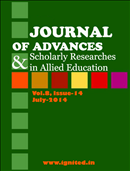Partition of India, 1947: Analyzing the Reasons
Examining the Causes and Consequences of the Partition of India
Keywords:
partition of India, South Asian sub-continent, India, Pakistan, Indian National Congress, Muslim League, violence, bloodshed, British, social barriers, economic barriersAbstract
The partition of the South Asian sub-continent into India and Pakistanwas one of the most crucial events in both countries histories. There wasexceeding tensions in India between the two main political parties; the IndianNational Congress, with predominantly Hindu based support and members and theMuslim League formed later as protest against the minority Muslim populationand their overlooked rights. Violence and bloodshed between Hindu and Muslimpopulation had become increasingly severe and forced the decision surroundingpartition to be made quickly before it escalated any further. Furthermore, theBritish intention to leave India was a ticking clock forcing the two partiestono come to a decision quickly rather than be granted independence only to beleft in a civil war. However, the social and economic barriers between Muslimsand Hindus also furthered the support for partitionPublished
2014-07-01
How to Cite
[1]
“Partition of India, 1947: Analyzing the Reasons: Examining the Causes and Consequences of the Partition of India”, JASRAE, vol. 8, no. 15, pp. 0–0, Jul. 2014, Accessed: Nov. 29, 2025. [Online]. Available: https://ignited.in/index.php/jasrae/article/view/5323
Issue
Section
Articles
How to Cite
[1]
“Partition of India, 1947: Analyzing the Reasons: Examining the Causes and Consequences of the Partition of India”, JASRAE, vol. 8, no. 15, pp. 0–0, Jul. 2014, Accessed: Nov. 29, 2025. [Online]. Available: https://ignited.in/index.php/jasrae/article/view/5323











